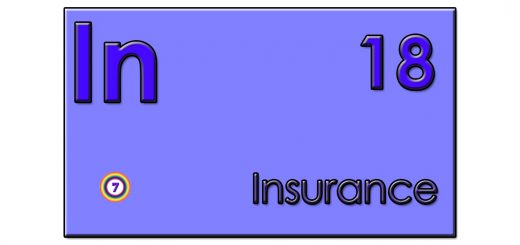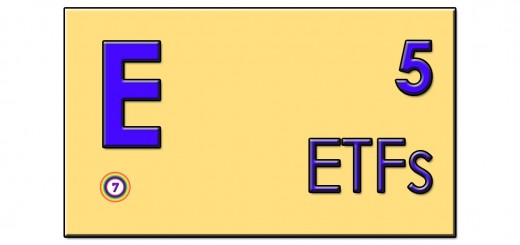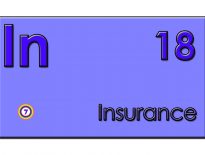Gold – Elements 27

Gold
What is it?
At the most basic level, gold is an attractive and expensive metal, used in jewellry and electronics.
- It’s also a commodity, in the sense that one bit of gold is much like another.
- We’ll consider it separately from the other commodities as it has some special characteristics.
Some people consider it to be an investment asset, but I would argue that it is closer to an insurance policy or to a currency (or as I tend to refer to it – the “anti-currency”).
Let’s start by explaining gold’s relationship with money
Gold was first used as jewellery by the Egyptians, around 3000 BC. Two thousand years later, it became de facto money as merchants began to use the jewellery in trade.
Then the Greeks and Romans made coins from it, followed by the European colonial powers, including England. Later, coins – and then notes – began to represent a claim on gold stored in an official vault, rather than being made of the metal itself.
Under the Bretton-Woods agreement at the end of World War II, the dollar was pinned to gold at $35 an ounce. In the 1960s European countries worried that the Americans had issued too many dollars and asked for their gold back.
The gold standard was abandoned in the 1970s and the price of gold rose (making US reserves worth more than their dollars in circulation).
Now all money is fiat money, simply issued by a government with only taxation to back it. But around 20% of the total gold supply is still held on deposit by the world’s central banks.
What kind of element is it?
For our purposes, Gold is an asset class – a subdivision of the set of financial assets known as commodities.
Who needs it?
Under normal circumstances, nobody needs it.
- Which is not to say that gold doesn’t have some good qualities.
The first good thing is that returns are poorly correlated with equities.
- That means that it can be a useful diversifier.
The second good thing is that gold has been a good store of value over the long-term. Unfortunately, we really do mean the long-term.
- It’s been a safe store of value for thousands of years, in contrast to all forms of paper money to date.
- But over 10 or 20 years – depending on the price you buy in at – it can be very poor value indeed.
- And just because it beats cash as a long-term store of value doesn’t mean it beats all other assets.
- Many (Buffett included) would argue that farmland is a better store of value (and one that produces an income every year).
Gold also has a couple of serious drawbacks. The first problem is that is has no uses.
- This means that it has not intrinsic value, and should be worth no more than the marginal cost of production.
Of course, this is an exaggeration, as it is used in jewellry and electronics – and would be used a lot more if we hadn’t decided that it was so expensive.
- But the jewellry demand is artificial / social – we could easily use substitutes.
- You can’t eat it, grow food with it, power a vehicle with it, or derive anything useful from it.
It also doesn’t get used up, so all the gold that has ever been produced is still available to satisfy future demand (should prices rise sufficiently to make that a sensible move).
The second problem is it pays no income.
- Companies make money each year and share some of that money with investors.
- Gold not only makes no money, it costs money to store and insure it.
- This makes it difficult to arrive at a “fair value” for gold – it is worth whatever someone will pay for it, and it is difficult to value against other assets other than by historical comparison.
The third problem is that it introduces currency risk.
- Gold is priced in dollars, so if the dollar moves, so does the gold price.
- Over the long-term, this may well be a wash, but if you anticipate that your currency will appreciate against the dollar, beware that it will also appreciate against gold.
There used to be further problems with gold:
- the expensive options available to own and store it
- at times, an unfavourable tax treatment
- dodgy salespeople and intermediaries in this space
- in the US, the right of the government to confiscate gold from private individuals (exercised in 1933)
Via ETFs, ISAs and SIPPs, these problems have now been eliminated.
- Gold has not recently been confiscated by a UK government, though I wouldn’t put it past Corbyn.
But it is when times are hard – when the markets crash, or people lose faith in fiat currency – gold can be useful.
- When people lose trust in paper money, they often turn to gold as a substitute.
- But let’s not exaggerate the benefit here – we’re talking about semi-Doomsday scenarios, where petrol, beans and bullets will also prove very useful.
- Gold becoming the de facto currency is not something to look forward to.
We should make a small detour here to compare the behaviour and characteristics of gold with those of the cryptocurrencies now being touted as equivalents to – or even replacements for – gold.
- Like gold, crypto has almost no utility (at the moment), and pays no income.
- So (also like gold) its intrinsic value should be linked to the marginal cost of production (computer equipment and electricity for mining).
Crypto bugs (often millenials from the US) argue that crypto is a currency, but it fails the three basic tests:
- medium of exchange – I can’t buy my groceries in Tesco with it
- store of value – too little history and too volatile a price
- unit of account – again, the price is way too volatile
It’s also different in terms of portability and security, though there are pros and cons in each case.
- But in the semi-doomsday scenario, gold is likely to be more useful.
So how much gold should you hold? That’s up to you, but we can set some boundaries:
- people with small portfolios (< £100k) probably don’t need any gold at all – cash will be more useful in general
- with larger portfolios, you might want to hold 2% to 5% of your net worth in gold or similar physical precious metals
- serious gold bugs will often advise holding 10% or 15% of your net worth, but I think that’s a serious drag on your portfolio
- between equities and your home, you probably have 75% of your net worth covered
- the remaining 20% has to accommodate cash, bonds, and other diversifiers (including gold)
- putting 10% to 15% of this in gold looks unbalanced to me
What comes before it?
Gold is one of the more esoteric asset classes, so there’s quite a lot that comes before it.
- You’ll need a financial plan, an annual budget to be sure that you have spare cash to save, and some financial statements to show where you are on your journey.
- Next you need to deal with your debts – you should have no debts other than a mortgage on the property you live in before you start to build up an investment portfolio.
- And you need to build up a cash reserve – six months of expenses is the usual recommendation.
- Finally you need to have a plan for where you will live.
- It’s fine to rent, but not usually the most profitable long-term option in the UK.
- But if you decide to buy, you need to have a plan for how you will finance this.
- And you need to be certain that you have spare money on top that can be used for investments.
And when you start investing, your first asset classes are likely to be Growth Assets (usually Equities) and Defensive Assets (like Bonds).
- Once you have these in place, you can think about Diversifying Assets like Gold.
In practical terms, you also need a product to put your Gold (( strictly, ETFs – see below )) in.
- This should be a tax-wrapper like a SIPP or an ISA, unless you plan to buy physical gold.
- Gold won’t be available in most workplace pension plans.
What comes after it?
Other Diversifying Assets – other Commodities, and FX.
- Then the late (Decumulation) stage Investing Elements like Drawdown, IHT Portfolios, Wills and Trusts.
What age do you need it from?
If at all, then for almost your entire investing career (its more a question of portfolio size than age):
- Ideally you will be investing from 25 to 75, or even to age 85.
It might take you a few years to get to the stage when you need Diversifying Assets, so let’s say from age 30.
Ignore the recent trend towards “life-styling”, where you drift towards bonds as you age.
- This is a leftover from the days of annuities, when it was important that your portfolio didn’t crash just before it was converted into a monthly income.
- Annuities are poor value now compared with drawdown, and retirement will last much longer than it used to.
So it’s safe to stick with a diversified portfolio (including Gold) for the long-run.
What age do you need it until?
You need Growth and Diversification assets until you decide to switch from your own retirement portfolio into a monthly annuity payment.
- Given current interest rates and longevity projections, this is unlikely to be before the age of 75.
An alternative scenario would be failing mental faculties which make you no longer feel confident that you can manager your own portfolio.
- If you have no one who can take over for you (via power of attorney), you might want to move into less volatile assets, or convert into an annuity.
How much does it cost?
A Gold ETF is pretty cheap – the one on our master list of ETFs costs 0.29% pa.
What’s in it?
The only real distinction here is between synthetic ETFs (which use derivative contracts, introducing counterparty risk) and physical ETFs, which own some gold in a vault.
Or you could buy physical gold, and store it at home or in a safety deposit box.
What does a good one look like?
Gold is a fungible commodity, and so “good” really means things like cheap and safe.
There are four basic options for investing in gold:
- physical gold, including bullion coins (Britannias and Krugerrands)
- platinum and silver coins are also available
- these track the gold price accurately and are useful if you want to go down the “bury it in the back garden” route
- you can also hold them in bank safety deposits or specialist metal depositories
- investment grade gold bullion is free of stamp duty and VAT
- you could also collect old and rare (numismatic) gold coins – such as sovereigns – though as we have pointed out, the costs to typical private investors are very high
- it’s also possible to hold gold directly in depositories, as bars – this can even work out cheaper than an ETF
- ETFs or unit trusts (OIECs)
- gold (and silver) mining shares – producers and explorers
- these are more speculative, and only recommended for gold bugs
- they don’t track the gold price as closely as you might expect
- speculating on the price via spread bets, CFDs or options
- this is fine for short-term trading, but not really part of a long-term investment strategy
What does a bad one look like?
Gold is a more mainstream investment these days, and any of the major Gold ETFs is a good choice.
Any recommended brands?
The main commodity ETF firms in the UK are Source and Lyxor.
What are the main risks?
The gold price, and – in the case of synthetic ETFs – counterparty risk from the banks underwriting the derivatives contracts.
How do you deal with these risks?
Diversification through several Gold ETFs is one approach, though some investors won’t hold enough Gold to make this practical.
- And remember to make Gold just a small part of your portfolio – 5% to 10% is plenty.
You will also need Growth assets (Equities) and Defensive assets (Bonds and Cash), as well as other Diversifying assets (Property and Commodities, Private Equity etc.).

















Mike- a good article and I have always seen the two ‘G’s’ as most investors’ insurance against bad times – consistently over market corrections both Gold and Gilts (Government Bonds) have protected people- and are a good defensive play.
I remember in the last big financial crisis in 08/09, Gold was up 25% (Gilts were +10% also) and proved a good counterbalance- especially when higher risk areas like small companies suffered with the average fund down 40%+
Even today where there has been a very modest (1.5% or so) fall in the equity markets, the two Gs prove their worth (Gold ETFs are up 1.3% and Gilts up 0.2%)- but as ever, Asset Allocation is the key!